Recently, we have been paying quite a lot of attention to the so-called “smart weights”. Perhaps our observations and suggestions will help someone decide on a purchase.
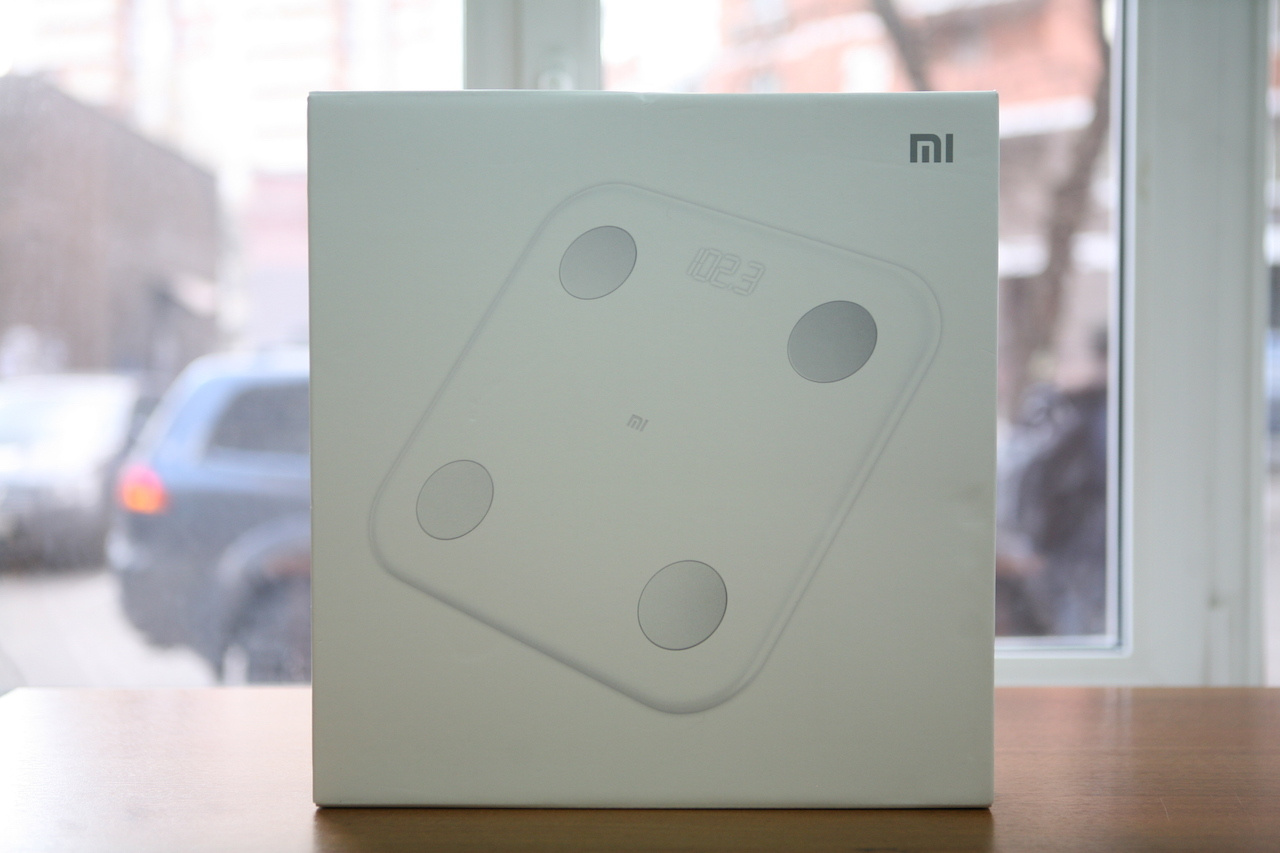 Smart scales - what is it
Smart scales - what is itWe understand by “smart” model weights, which somehow communicate with a smartphone to save measurements. There are two ways: Bluetooth and Wi-fi.
Scales with Bluetooth are often cheaper - this is their main advantage. Scales with Wi-fi are more expensive, but many users are ready to overpay for it, because they consider that it is more convenient: you do not need to keep a smartphone close while weighing, just get up and go, and then look at the result when it’s convenient.
In turn, smart scales can also be divided into two categories:
The latter are models that store only weight or weight and body mass index in the application. Scales analyzers, in turn, offer several metrics, including fat, bone mass, muscle mass, and so on. In different models, a set of indicators can reach 15.
As you understand, not all smart scales are analyzers, and not all analyzers are smart scales. Among the latter, the most famous models are Tanita, since the brand is one of the first to offer both biomedance-based clinical analyzers and consumer models.
In Russia, the most well-known "non-smart analyzers" can be called Omron models:
BF-214 ,
BF-508 and others. Such scales have built-in memory for a certain number of measurements and are suitable for those who do not want or do not like to save something in their phone or simply use the phones of older generations.
 Smart Analyzers
Smart AnalyzersThe basis of the work of any such scales is
bioimpedance analysis .
It is considered one of the most affordable and is performed both in a clinical setting and in everyday life, just with the help of modern scales. In Russia, the clinical biomedometer is “MEDASS”, which is referenced in popular science publications and libraries. It is believed that the error in a number of parameters as compared with the reference method of analysis - DEXA - is at the level of 3-5%. At least in several scientific papers, a similar coincidence in the parameter “fat mass” is demonstrated (
one ,
two ).
It is also appropriate to mention our comparison again:
| Data | MEDASS | MGB | Dexa |
|---|
| Fat mass in% | 19.5 | 21.4 | 19.7 |
| Fat mass in kg | 12.5 | 13.6 | 11.9 |
| Muscle mass | 27.2 | 28.5 | Muscle mass + connective tissue + fluid - 48.6 |
| Metabolism | 1555 Kcal / day | 1348 Kcal / day | 1427 Kcal / day |
| Mineral composition | 2,652 kg | 2.5 kg | 2,773 kg |
Why not do all the time DEXAFirst, some kind of irradiation, and often it is not recommended to do it: the clinic said it was enough every six months.
Secondly, on average, the cost of this research in Moscow ranges from 7 to 10 thousand rubles. The cost of bioimpedance in the clinic - from 1000 rubles. Yes, and modern scales can now be bought within 2-3 thousand.
Finally, deciphering a DEXA without the doctor's comments is not an easy task.
In other words, with a fairly high coincidence of a number of parameters, smart analyzer scales are a quite good alternative for tracking trends.
Bioimpedance SafetyThis study is not recommended for people with metal inside the body, a pacemaker, is also contraindicated for pregnant women.
General recommendationsBefore the study for two hours is not recommended to drink the liquid, and for the day - to refrain from alcohol.
Scale accuracyAll scales offer approximately the same set of metrics. Among them are the main ones:
- Fat analysis
- Bone Mass Analysis
- Muscle Mass Analysis
- Hydration level
- Visceral fat level
- Metabolism
Also, all scales (99.9% of models) have a limit on the allowable weight - up to 150 kg with a step of measurement and rounding up to 100 grams.
What of this can really measureThe most likely metrics that can be tracked using bioimpedance analysis is primarily the level of fat. You can also find a correlation in the index of the mineral composition of bones and metabolism. The rest with a number of reservations.
Briefly about metricsBMIBody mass index is more like math than analysis. The simplest parameter, which is calculated by the formula:
weight in kg / height in m ^ 2 .
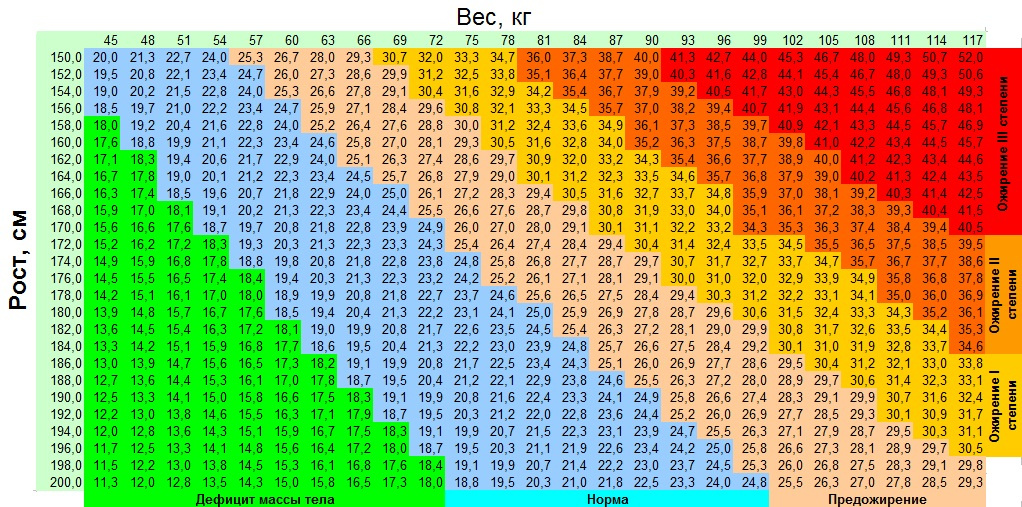
That is, for example, 65 / (1.70 * 1.70) = 22.4.
Fat levelAs already noted, any analyzer scales are approximate figures in all data except for weight, but these figures help to
track trends : if the percentage of fat increases from measurement to measurement, then this is a bad signal, and count on the fact that “all is false " it does not follow.
You can also calculate the percentage of fat yourself: for this you need to divide the fat mass by body weight, but for this you need to know the first parameter, which with accuracy will give only hydrostatic weighing. Analyzer scales, on the other hand, produce a calculation “in mind” - passing a current through one leg and receiving a signal with output losses - on the other leg - they divide the figure and give you an initial percentage, which can then decrease / increase depending on habits and image of life.

For men, as can be seen, it is considered to be the range from 6 to 13 percent - close to the athletic rate, more than 25% - obesity.
Problems with determining the level of fat in the body would not be so acute if the excess of such would not be a possible factor in other, very sad diseases of the cardiovascular system, diabetes, etc., therefore even in this approximate form this percentage is very important and demanded metric!
Bone massThe most important parameter, which among others is analyzing smart scales! Bone mass, or the mass of the mineral composition of the skeleton is shown in kg and must meet the following standards:

Decline is a bad sign, because, even guided by his own logic, a person must understand that the strength of bones = support and support to muscles and internal organs. If there is a loss in this trend, it is necessary to consult a doctor and make the proposed tests, since among other things, losses in bone mass may indicate
osteoporosis , a disease that is now on a par with oncology, diabetes and cardiovascular diseases.
Excerpt from statistics in the USEvery year, 1.5 million fractures associated with osteoporosis are recorded, of which 700 thousand are spinal fractures, 250 thousand are hip fractures, 250 thousand are distal radial bone fractures and 300 thousand are fractures in other parts of the skeleton. The risk of fractures of the spine, femoral neck and distal radius is 40% for white women and 15% for white men aged 50 years and older. Up to 50% of patients with a fracture of the femoral neck cannot do without help, and 15 to 20% of patients die within 1 year. The number of osteoporotic fractures in the world is increasing from 1.7 million in 1990 to an increase to 6.3 million in 2050
From here Also, more in-depth studies of bone tissue
can reveal certain types of cancer in children.
In any case, this data should not be underestimated.
Muscle Mass AnalysisAn increase in muscle mass is conventionally equated to a decrease in fat mass: more muscles - less fat, which is the main criterion for weight loss. However, this is not always the case.
In some sense, the danger is low-calorie diets, which some people use “paired” with physical exertion: there is little protein in such diets, so losing weight - a person loses weight, but not due to burning fat, but due to the loss of muscle mass!
In this connection, if the indicator of muscle mass, following the weight decreases, then the trend can also be considered unfavorable, therefore it is customary to monitor this with the help of improvised tools, including weights.
You can calculate muscle mass yourself:
Here is one of the tipsIn order to determine the percentage of the weight of the muscles in the human body auxiliary devices are needed. These are the caliper and tailor centimeter.
If the caliper is missing, it can be easily replaced with a caliper. Before you begin to determine the muscle mass in the human body, you need to be aware of what body measurements you need to take to get started and take into account all sorts of nuances of this process.
To start the calculation is to measure with a centimeter, which will need to measure four circles:
It is recommended to measure the shoulder only in a calm state, so you should not strain the muscles in the measurement process. Try to measure the shoulder in the place where most of the muscles are located.
When taking measurements from the forearm, care must be taken to ensure that the hand is not in tension and freely hung.
To measure the shin, it is necessary to take measurements of the calf, preferably in the place where they are found most.
When measuring the hips, it is necessary to become even, so that the weight of the body is evenly distributed over the two legs. After that, you should measure the centimeter, covering the thigh under the gluteal fold.
After the required indicators have been removed, for further calculations you will need to know more and subcutaneous fat folds. The caliper will help to do this. Based on the data obtained, it is possible to calculate how much muscle mass a person has.
In order to calculate the muscle mass of men, you can use the Mateka formula. The following formula has been developed for this:
M = L * r2 * KIn order to understand the calculations, you can use the following decoding:
- M - this is muscle mass, which we need to calculate.
- L - an indicator that characterizes the growth of men. For this formula, the growth is recommended to take in centimeters.
- r - to calculate this indicator, you must perform three steps. The first step is to calculate the sum of the four indicators obtained at the very beginning of the determination of mass - this is the coverage of the shoulder, forearm, lower leg and thigh. The resulting amount must be divided into 25, 12. The second action is similar to the first, because it also needs to know the sum of the indicators and divide it by 100. In the second step, measurements of the subcutaneous fat folds are taken to calculate. The essence of the third action is to obtain the difference between the first action and the second. This difference is an indicator of r, which you will need to substitute in the formula that was given above.
- K is a constant figure, which is 6.5.
According to this formula, provided that the calculations were carried out, right, you can determine the weight of the muscles in the human body.
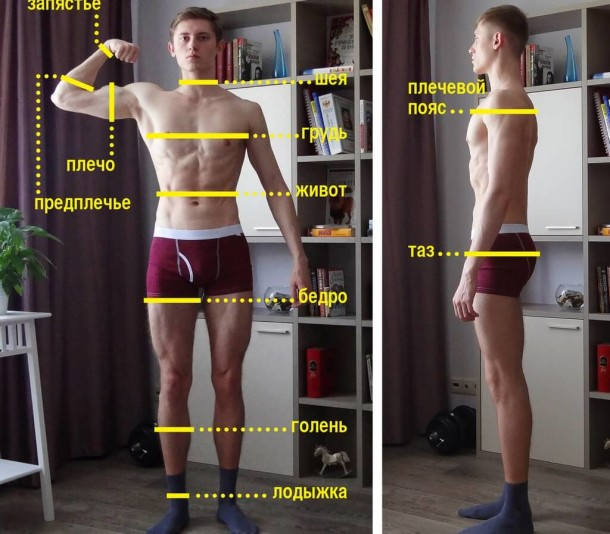
The rate of lean body mass in percent for men and women is different. So, for a woman, the rate is 35% of the entire body mass. But the rate for men is slightly higher and is about 43%.
Of course, with regular physical exertion and proper nutrition in an athlete's body, the processes of increasing muscle mass are activated more than in a person who has no relation to sports. Therefore, the norm for an athlete is 50% of the muscles of the total body mass.
From here It is necessary to take into account the fact that the scales are non-segmented muscle mass, including both smooth and skeletal muscles, in other words, an average indicator, however, with a uniform decrease in weight and muscle mass, it is necessary to guess that something probably went wrong. review diet and workouts!
Body fluid levelPrimarily in the scales, this metric is introduced because a decrease in the level of fluid leads to a set of fat, in other words, for those who lose weight, it is important to keep track of this as well. Normal is the level of liquid 50-75%.

You also need to understand that water in general has one of the key roles in our health. Here are some of the “spheres of influence”:
- body temperature adjustment
- provision of nutrients, oxygen, enzymes, hormones
- removal of toxins and metabolic products from the body
- support normal joint function
- ensuring the natural moisture of the skin and other tissues, etc.
By reducing this indicator, it is necessary to consult with a specialist, as a lack of water worsens the work of the kidneys, increases the load on the liver, etc., which can lead to serious chronic diseases.
What scales to choose?With a sufficiently large number of matches, you will have to choose, taking into account such parameters as design, price, usability. Our subjective rating looks like this.
Smart scales "not analyzers"Polar Balance ModelIt synchronizes with both the smartphone and the Polar tracker to allow you to achieve the best goals in terms of weight and monitor how activity is related to the achievements of the indicators.

Relevant to those who are already in the Polar ecosystem in the first place.
Wahoo balance
Another sports brand. Surprisingly, the application was created for iOS only. Also do not have any special features and are only for weight control.
Balance analyzersMost Stylish - QardioBase
Round scales from Qardio bribe appearance. These are analyzer scales that offer advanced body analysis, and, for example, have a “Pregnancy” mode, which is not the case in other models.
Most comfortable - MGBMGB - the scales that we carry. First of all, they are convenient for their compact size and dimensions; weight without box is up to 1 kg.
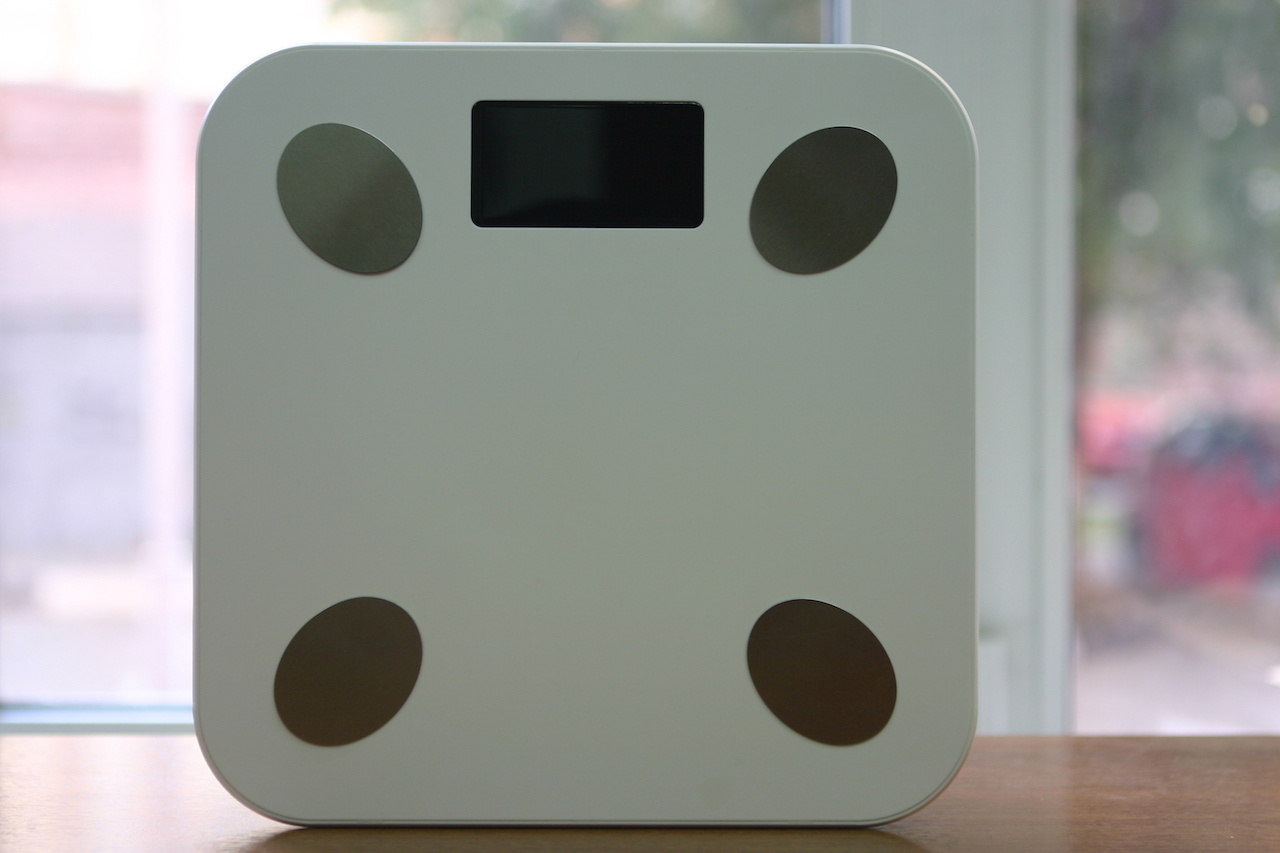
Because of the size of the electrodes, even a child’s foot can reach, if there is such a need. Plus, this model has passed with us two tests in the clinic on the device "MEDASS" and
analysis DEXA .
The application has already been Russified, but so far there is still a problem with the layout, which will be fixed soon. The only thing that may seem inconvenient is the need to keep a smartphone with the application running, but this is a dubious limitation, in our opinion.
The most "cunning" - XiaomiAfter the company Xiaomi invested in IHealth (in other words, bought it), the number of Xiaomi medgadgets has increased markedly: tonometers and smart scales. If we compare the two models: Xiaomi 2 and
HS6 , then some similarities are guessed.
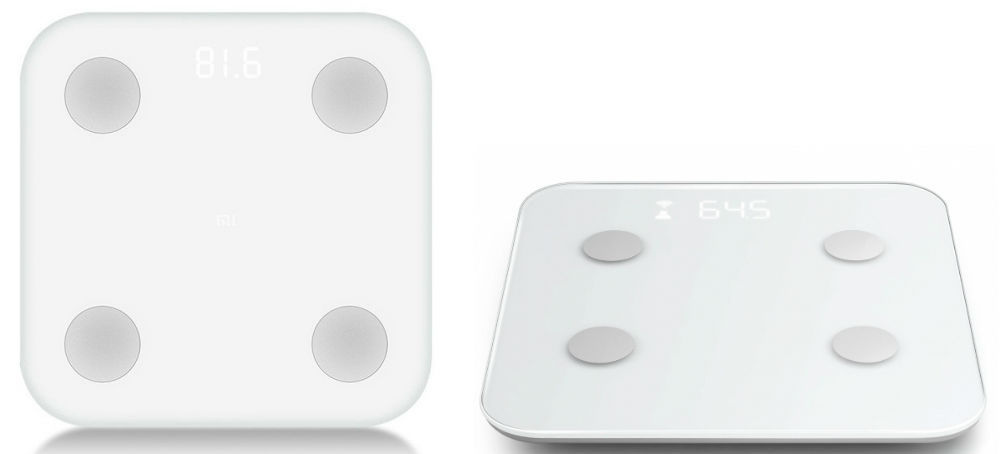
As always, we will never know to the end who made the scales for Xiaomi, but they are in the line. We even did a
review once.
Cheapest with Wi-fi - LeEcoNon-localized, but sold in Russia analyzer scales LeEco. Big, stylish, but - here are the
screenshots , in general.

However, there are icons that can be clear about what is at stake, so if you are ready for a compromise, cheaper scales with Wi-fi "branded" have not yet met.
The most "sports" - GarminGarmin - exclusively for fans, because, in principle, nothing that would set them apart from the general background is frankly not. Yes, analyzers, yes, with Wi-fi. And that's all.
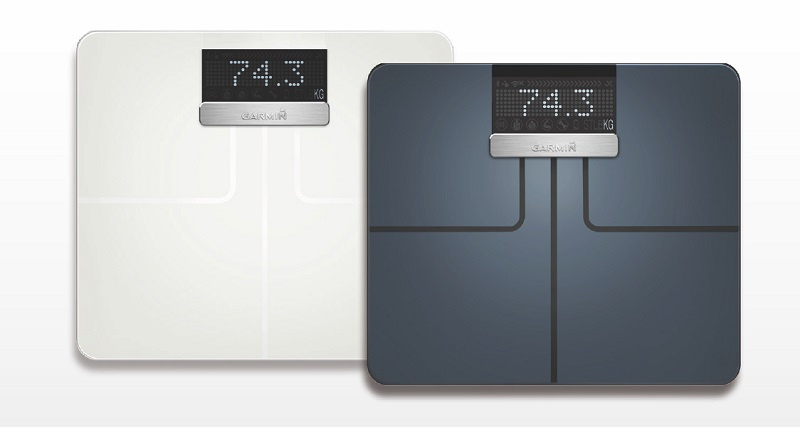
By and large, Garmin has created scales for those who are “family members” and are willing to pay the amount that will be assigned for them.
Scales for pregnant women - OzakiThe device is rather interesting for the application, which, however, is only for IOS, where there is a diary, and help in calculating the weight of the child, and tips for all the days of pregnancy.
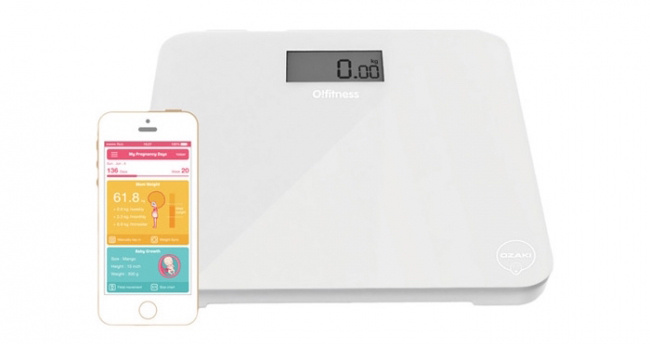
Considering who they are addressed to, bioimpedance is not here.
How it all began Scales that we lostThree large brands stood at the origins of the smart scales, one of which now, after a while, announced the restart of the scales, the scales of another brand now go out under a false name without any major changes. Scales of the third brand - left the market.
Pre-order for Aria 2 is already open on the official website, and the new scales will analyze the weight and percentage of fat. Withings should be sought after Nokia's requests after the latter bought it, and Runtastic Libra, again after buying Runtastic Adidas, left the market at all.
From the nearest that is on the market from this range - Nokia. Now on sale there are three models of Nokia Body, Nokia Body + and Nokia Body Cardio.